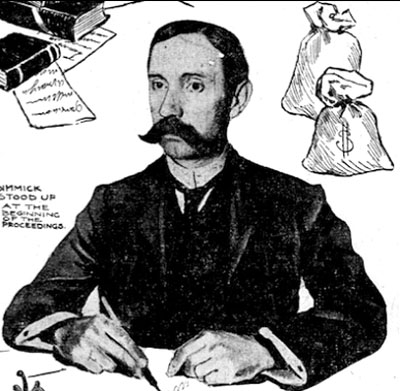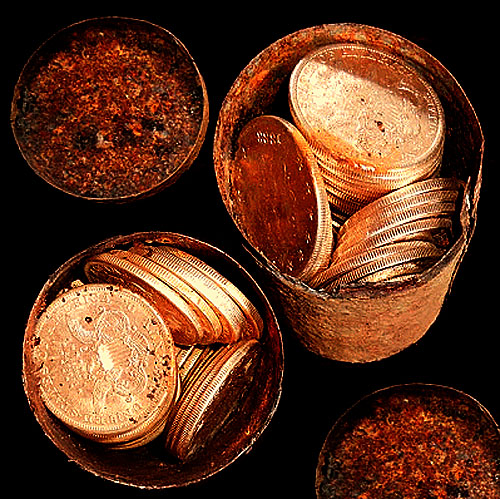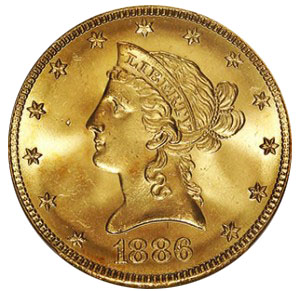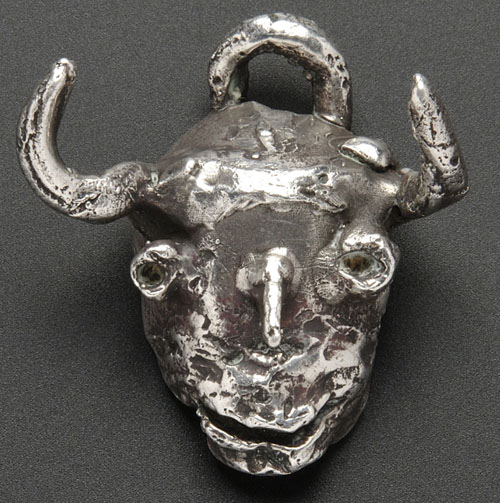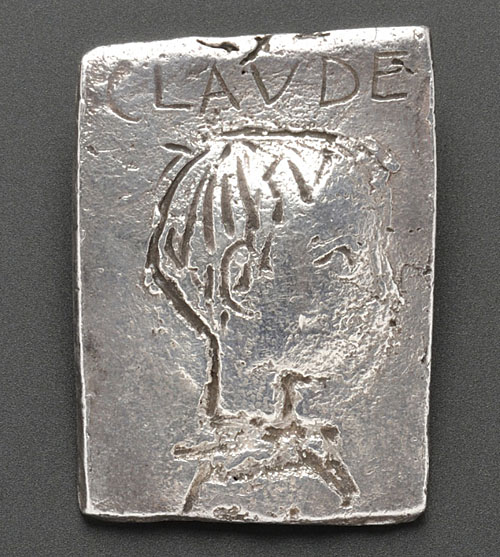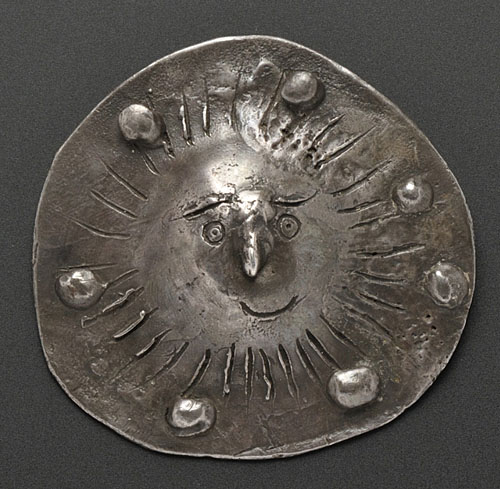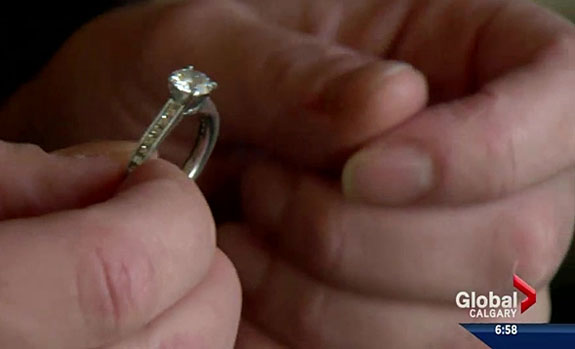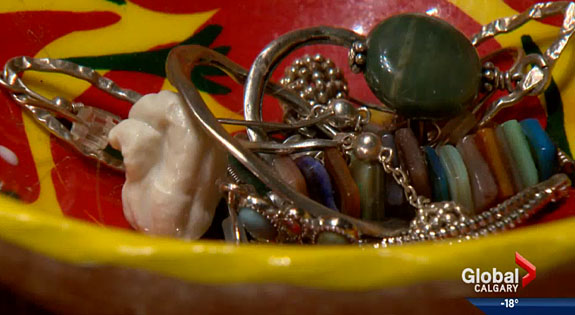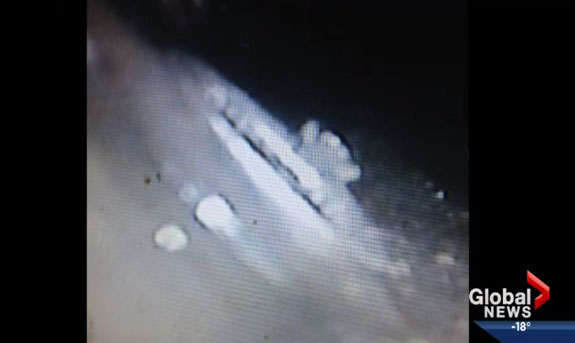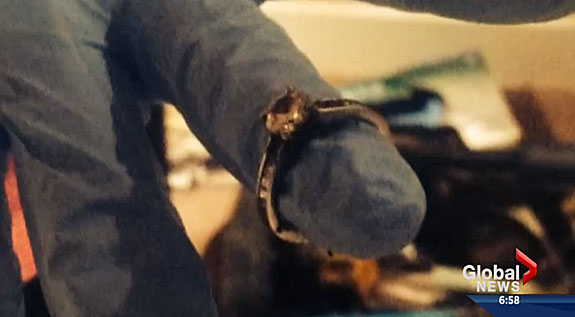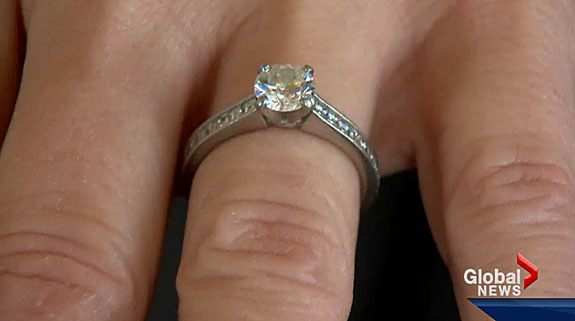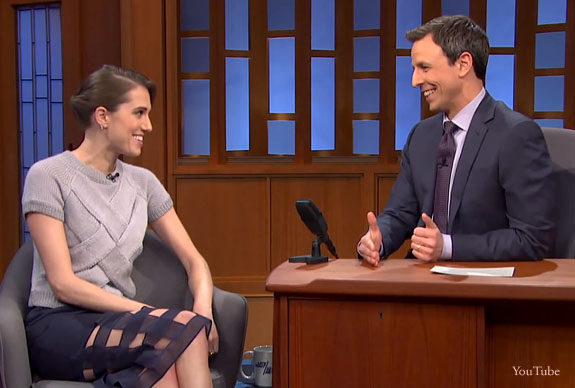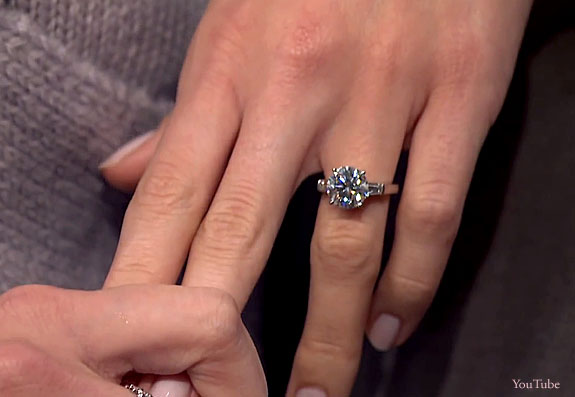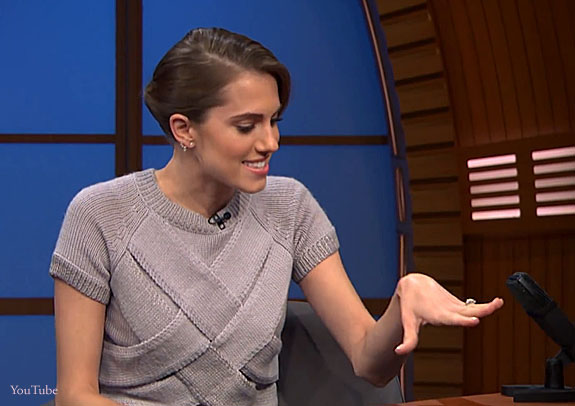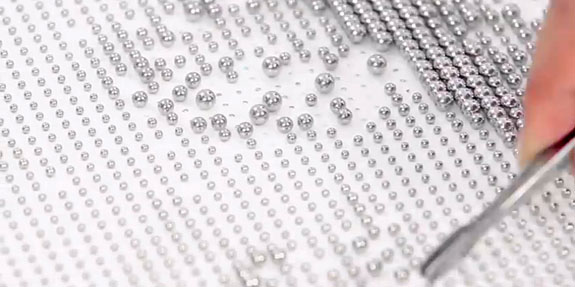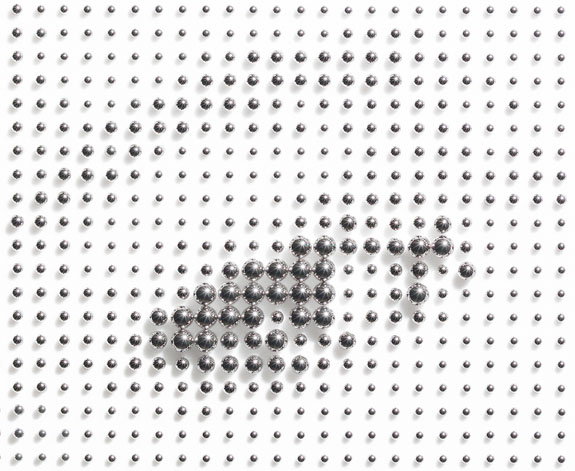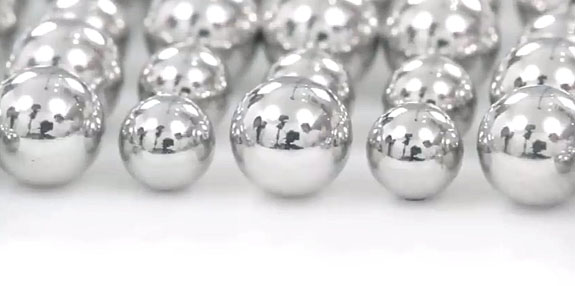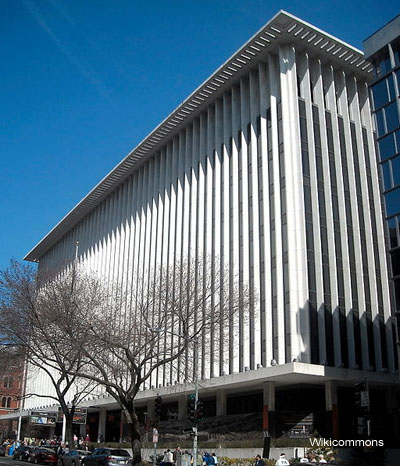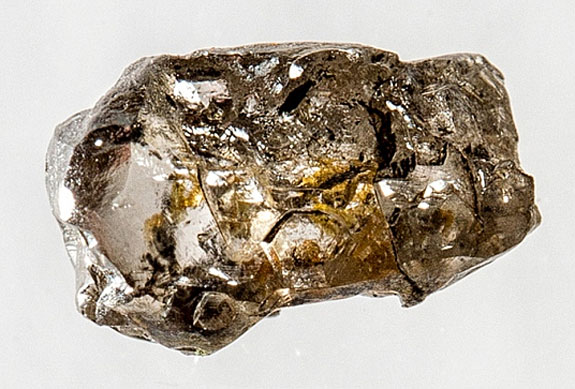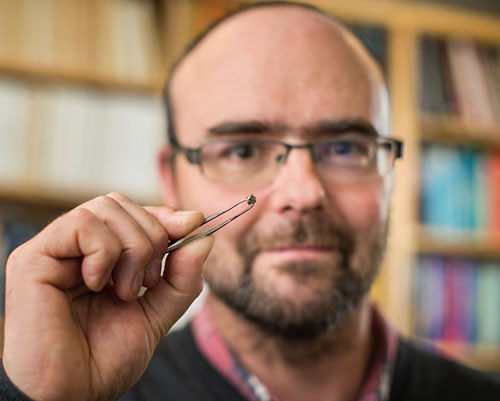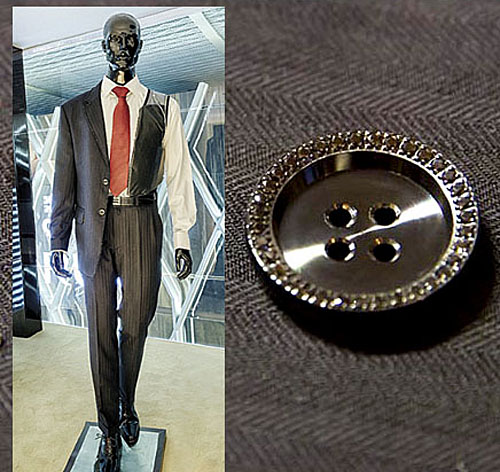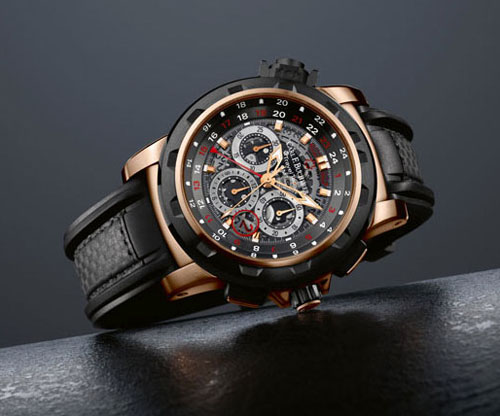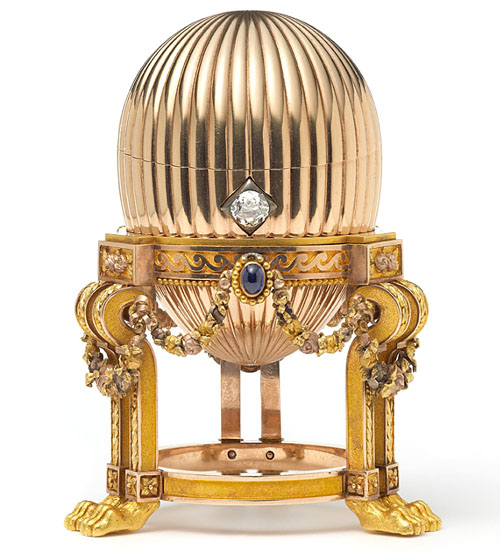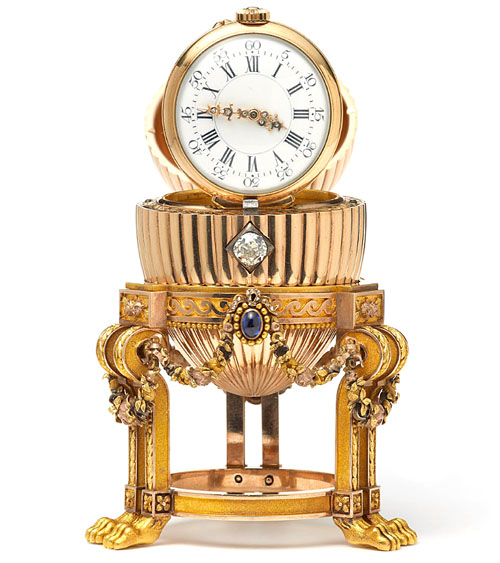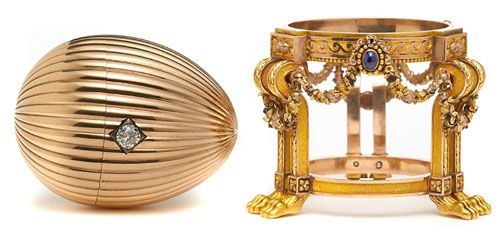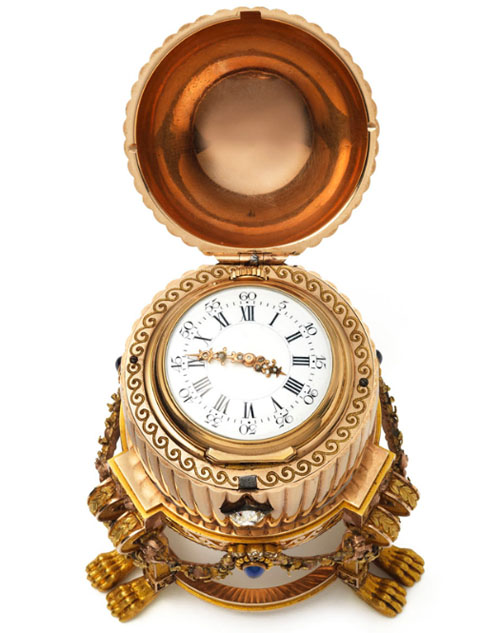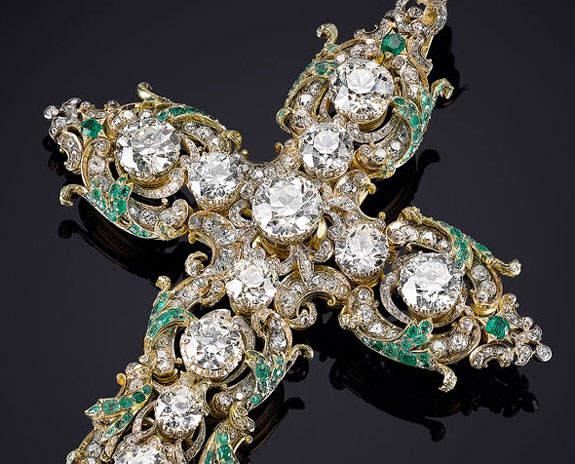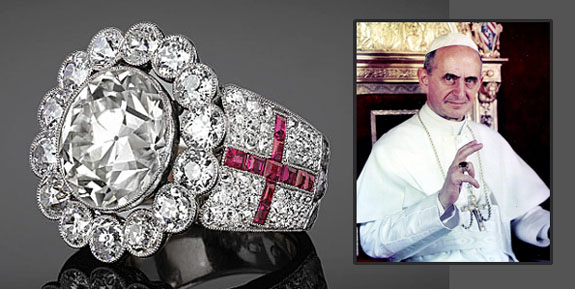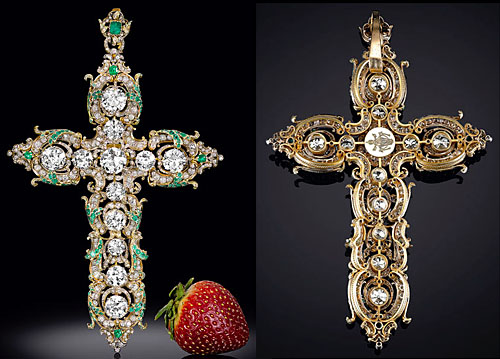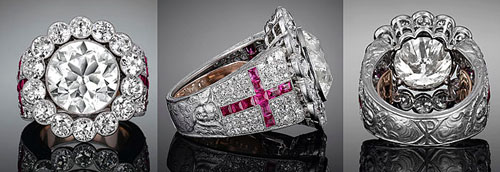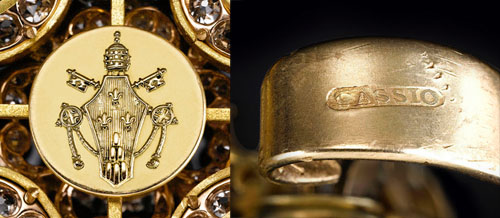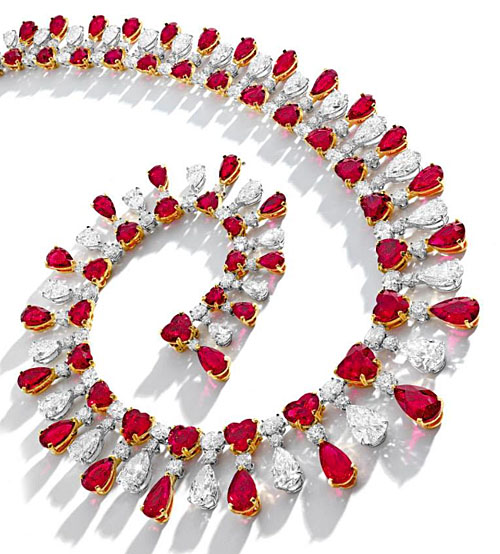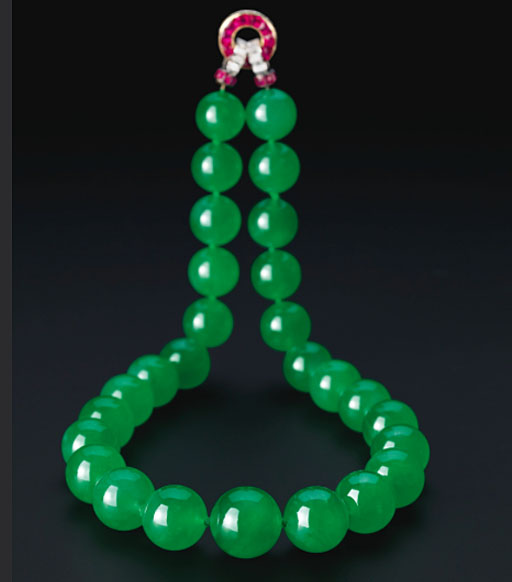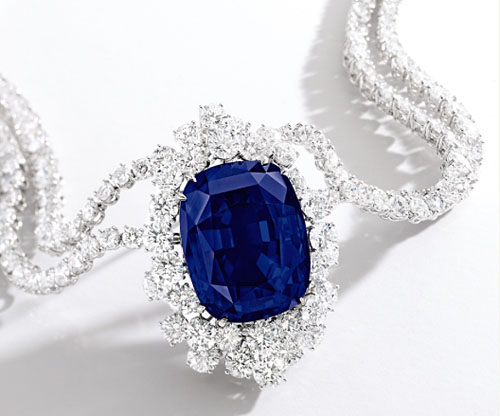March 3rd, 2014
Standing nearly 14 inches tall and weighing 1,363 carats, the obelisk-shaped fantasy-cut “Dom Pedro” aquamarine is one of the few objects in the world that can hold its own in a display case just 30 feet from the Hope Diamond. The Dom Pedro is the largest faceted aquamarine in the world and, arguably, the most beautiful example of March’s official birthstone.
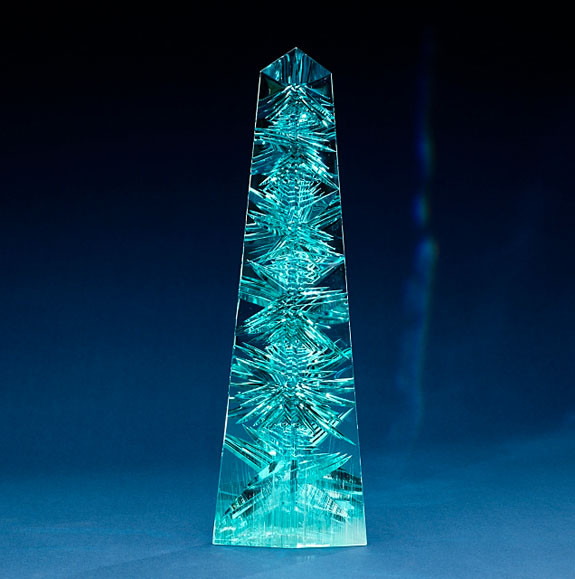
The Dom Pedro is the masterwork of Bernd Munsteiner, an Idar-Oberstein-based gem cutter, who has been called “The Picasso of Gems” and “The Father of the Fantasy Cut.” Munsteiner spent four months studying a 57-pound rough aquamarine crystal before embarking on a grueling six-month adventure to meticulously cut, facet and polish the stone.

In December of 2012, the Dom Pedro was donated to the Smithsonian’s National Gem and Mineral Collection and is now a top attraction at the Janet Annenberg Hooker Hall of Geology.
The Dom Pedro was originally part of a larger crystal that was discovered by three Brazilian prospectors — garimperos — in the state of Minas Gerais in the late 1980s. While being transported, the one-meter-long, 100-pound crystal fractured in two places. Two pieces were eventually cut into smaller gemstones, but the largest piece had much greater potential. Its exquisite green-blue color and pristine clarity opened a window of opportunity for a cutter with the skill of Munsteiner.
The legendary gem cutter was commissioned in 1992 to take the Dom Pedro, a 23-inch-tall rough aquamarine, and transform it into a design he would call Ondas Maritimas, or “Waves of the Sea.”
Munsteiner is famous for his “fantasy cuts,” where he facets a pattern of “negative cuts” into the back of a gem, which reflects the light from within.
“There is so much about the Dom Pedro that is remarkable, but what excites me most is that we are able to preserve the story that goes along with it,” said Kirk Johnson, the director of the Smithsonian’s National Museum of Natural History.
The Dom Pedro, which was mined in the state of Minas Gerais, Brazil, and appropriately named after Brazil’s first two emperors, Dom Pedro Primeiro and his son, Dom Pedro Segundo, has a fascinating backstory. An unidentified Brazilian purchased the three fragments of the broken original crystal and sold the largest chunk to Munsteiner and a consortium of gem connoisseurs in 1992.
When Munsteiner viewed the gem for the first time, “it was love a first sight!” according to an account at Smithsonian.com. From 1992 to 1993, he focused on what would be called the “project of his life.”
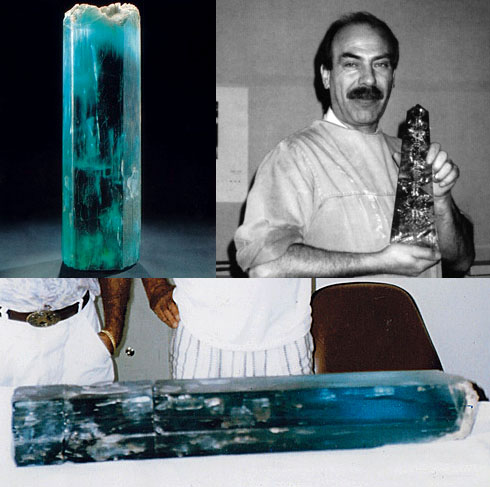
Smithsonian.com reported that Munsteiner made hundreds of sketches before deciding on the lozenge-shaped “negative facets” that are "stepped" along the two backsides of the obelisk. In certain lighting conditions, the gem gives the illusion of being illuminated from within.
He was reportedly pleased that the original crystal had been broken into three pieces, as it gave him confidence during the cutting process that the internal stresses of the stone were no longer a concern.
While cutting the gem completely by hand, he was never concerned with the eventual carat weight. His attention was purely on the beauty and the brilliance. "When you focus on the carat weight, it’s only about the money,” he said. “I cannot create when I’m worried about the money.”
Unveiled at the annual gem fair in Basel, Switzerland, in 1993, the gem became a traveling ambassador for the German government, a tangible example of German craftsmanship and ingenuity.
But, by the late 1990s, the gem’s future was in jeopardy. The Brazilian consortium partner wanted the gem to be sold so he could recoup his investment. Gem collector Jane Mitchell and her husband Jeffery Bland stepped in to purchase the Dom Pedro in 1999, ensuring that it wouldn’t be cut up and made into many smaller aquamarines.
The stone was generously gifted to the Smithsonian in 2011 and made part of the permanent exhibition at the very end of 2012.
Credits: Dom Pedro photos (top) by Donald E. Hurlbert, Smithsonian's National Museum of Natural History; Other images by B. Munsteiner.

The Dom Pedro is the masterwork of Bernd Munsteiner, an Idar-Oberstein-based gem cutter, who has been called “The Picasso of Gems” and “The Father of the Fantasy Cut.” Munsteiner spent four months studying a 57-pound rough aquamarine crystal before embarking on a grueling six-month adventure to meticulously cut, facet and polish the stone.

In December of 2012, the Dom Pedro was donated to the Smithsonian’s National Gem and Mineral Collection and is now a top attraction at the Janet Annenberg Hooker Hall of Geology.
The Dom Pedro was originally part of a larger crystal that was discovered by three Brazilian prospectors — garimperos — in the state of Minas Gerais in the late 1980s. While being transported, the one-meter-long, 100-pound crystal fractured in two places. Two pieces were eventually cut into smaller gemstones, but the largest piece had much greater potential. Its exquisite green-blue color and pristine clarity opened a window of opportunity for a cutter with the skill of Munsteiner.
The legendary gem cutter was commissioned in 1992 to take the Dom Pedro, a 23-inch-tall rough aquamarine, and transform it into a design he would call Ondas Maritimas, or “Waves of the Sea.”
Munsteiner is famous for his “fantasy cuts,” where he facets a pattern of “negative cuts” into the back of a gem, which reflects the light from within.
“There is so much about the Dom Pedro that is remarkable, but what excites me most is that we are able to preserve the story that goes along with it,” said Kirk Johnson, the director of the Smithsonian’s National Museum of Natural History.
The Dom Pedro, which was mined in the state of Minas Gerais, Brazil, and appropriately named after Brazil’s first two emperors, Dom Pedro Primeiro and his son, Dom Pedro Segundo, has a fascinating backstory. An unidentified Brazilian purchased the three fragments of the broken original crystal and sold the largest chunk to Munsteiner and a consortium of gem connoisseurs in 1992.
When Munsteiner viewed the gem for the first time, “it was love a first sight!” according to an account at Smithsonian.com. From 1992 to 1993, he focused on what would be called the “project of his life.”

Smithsonian.com reported that Munsteiner made hundreds of sketches before deciding on the lozenge-shaped “negative facets” that are "stepped" along the two backsides of the obelisk. In certain lighting conditions, the gem gives the illusion of being illuminated from within.
He was reportedly pleased that the original crystal had been broken into three pieces, as it gave him confidence during the cutting process that the internal stresses of the stone were no longer a concern.
While cutting the gem completely by hand, he was never concerned with the eventual carat weight. His attention was purely on the beauty and the brilliance. "When you focus on the carat weight, it’s only about the money,” he said. “I cannot create when I’m worried about the money.”
Unveiled at the annual gem fair in Basel, Switzerland, in 1993, the gem became a traveling ambassador for the German government, a tangible example of German craftsmanship and ingenuity.
But, by the late 1990s, the gem’s future was in jeopardy. The Brazilian consortium partner wanted the gem to be sold so he could recoup his investment. Gem collector Jane Mitchell and her husband Jeffery Bland stepped in to purchase the Dom Pedro in 1999, ensuring that it wouldn’t be cut up and made into many smaller aquamarines.
The stone was generously gifted to the Smithsonian in 2011 and made part of the permanent exhibition at the very end of 2012.
Credits: Dom Pedro photos (top) by Donald E. Hurlbert, Smithsonian's National Museum of Natural History; Other images by B. Munsteiner.




